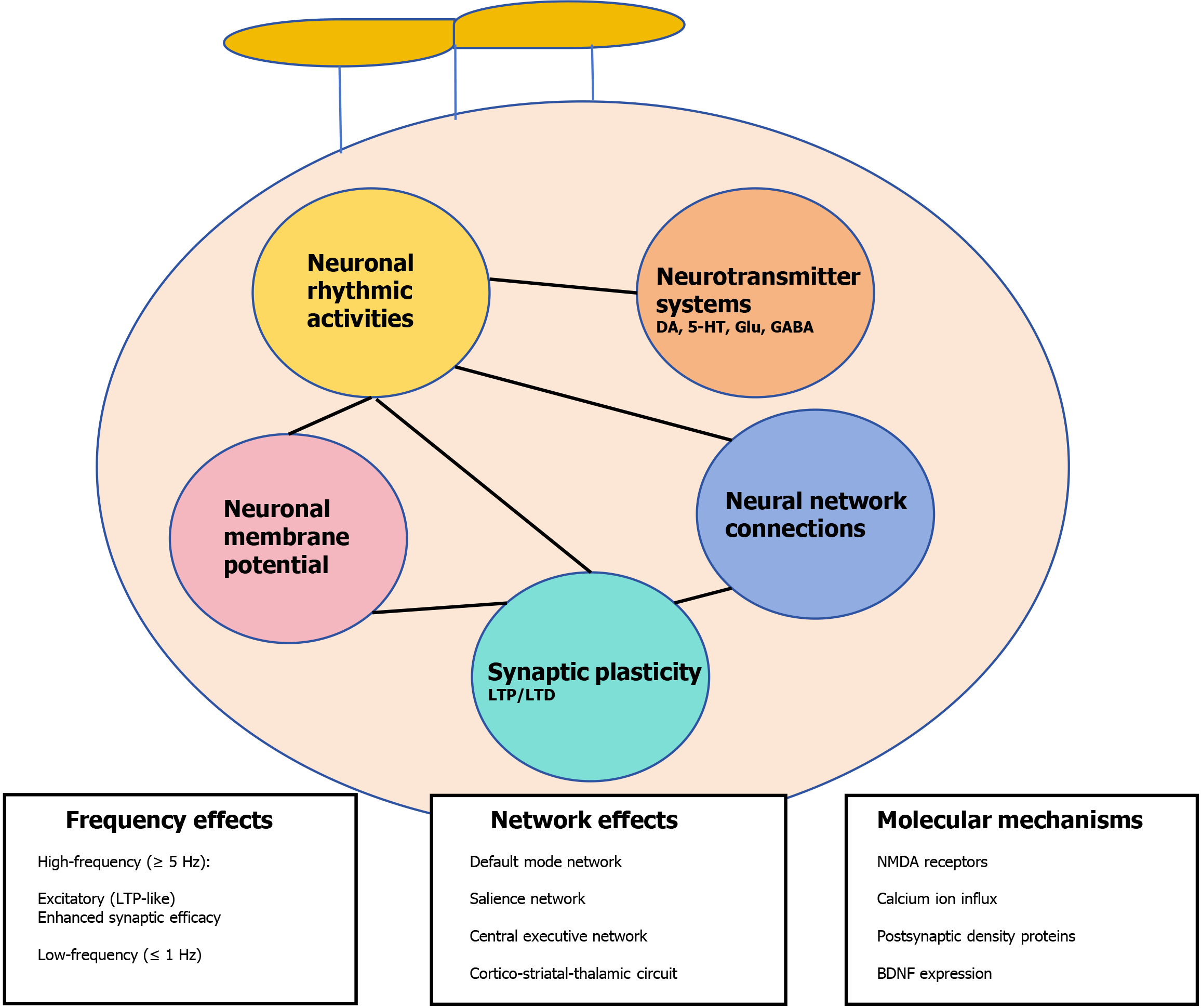Copyright
©The Author(s) 2025.
World J Psychiatry. Sep 19, 2025; 15(9): 108497
Published online Sep 19, 2025. doi: 10.5498/wjp.v15.i9.108497
Published online Sep 19, 2025. doi: 10.5498/wjp.v15.i9.108497
Figure 1 Neurophysiological basis and working mechanism of transcranial magnetic stimulation.
Transcranial magnetic stimulation (TMS) works by using magnetic fields to influence brain activity through five key mechanisms: Changing neuronal membrane potentials, modifying synaptic plasticity, reshaping neural networks, regulating neurotransmitter systems, and altering neuronal rhythms. High-frequency stimulation (≥ 5 Hz) excites neurons while low-frequency stimulation (≤ 1 Hz) inhibits them. TMS affects major brain networks and molecular pathways including N-methyl-D-aspartic acid receptors, calcium signaling, and brain-derived neurotrophic factor expression. This comprehensive action across multiple neurobiological levels explains TMS’s effectiveness in treating conditions like Parkinson’s disease. DA: Dopamine; 5-HT: 5-hydroxytryptamine; Glu: Glucose; GABA: Gamma-aminobutyric acid; LTP: Long-term potentiation; LTD: Long-term depression; NMDA: N-methyl-D-aspartic acid receptor; BDNF: Brain-derived neurotrophic factor.
- Citation: Zhou XL, Li Y, Xia W, Zheng YY, Wu AP. Advances in transcranial magnetic stimulation for psychological symptom management in Parkinson’s disease. World J Psychiatry 2025; 15(9): 108497
- URL: https://www.wjgnet.com/2220-3206/full/v15/i9/108497.htm
- DOI: https://dx.doi.org/10.5498/wjp.v15.i9.108497









